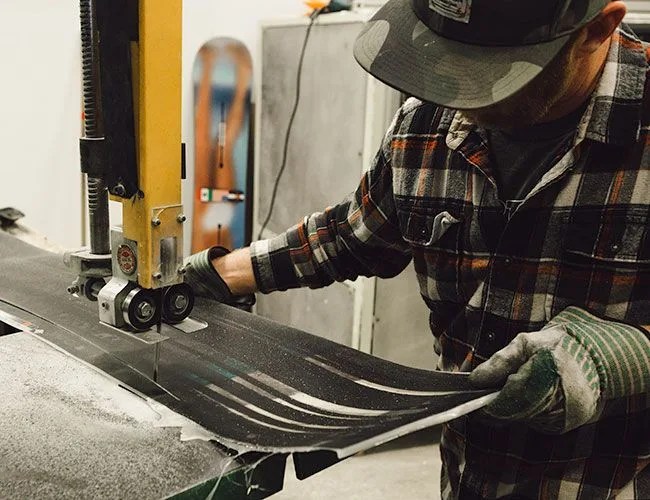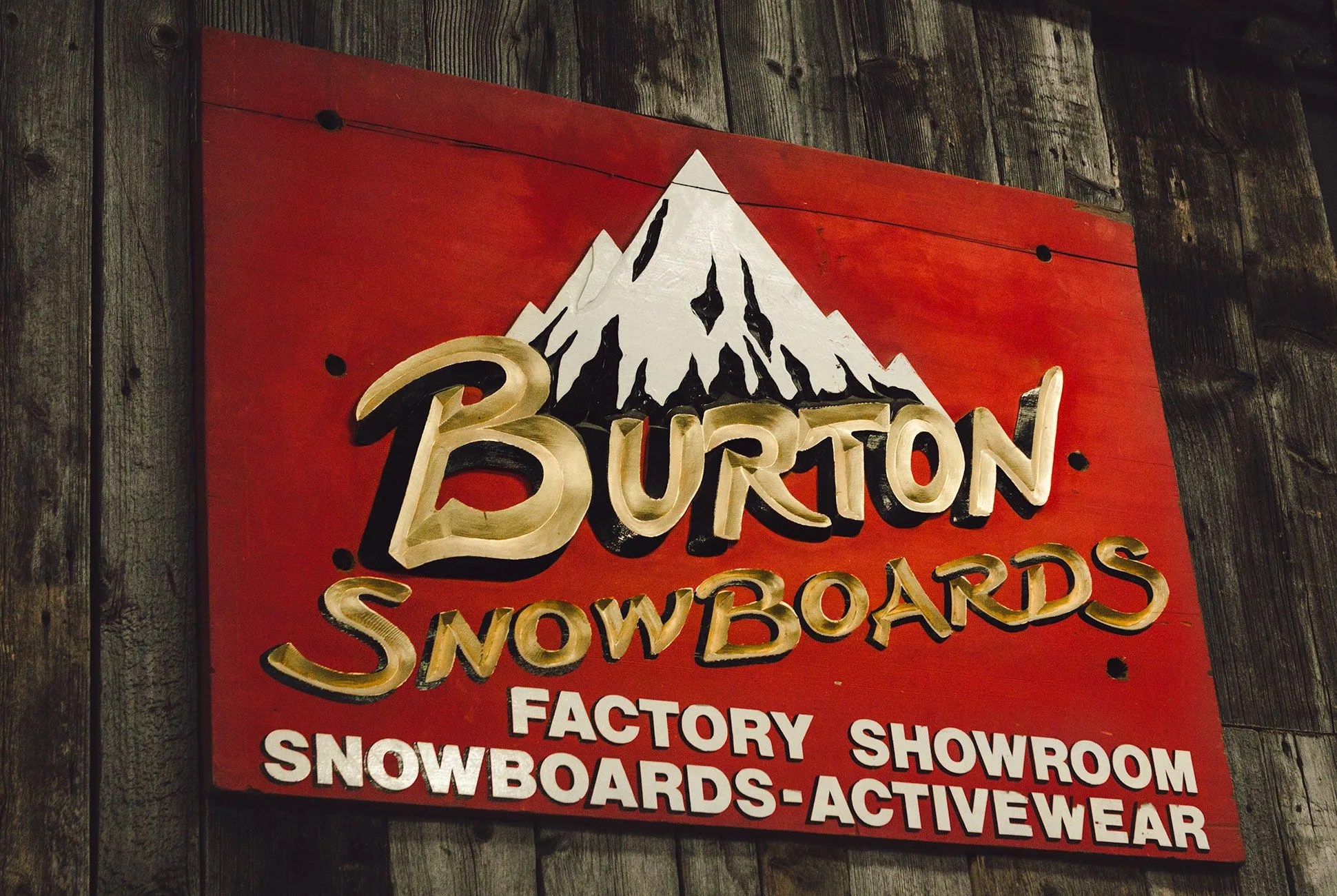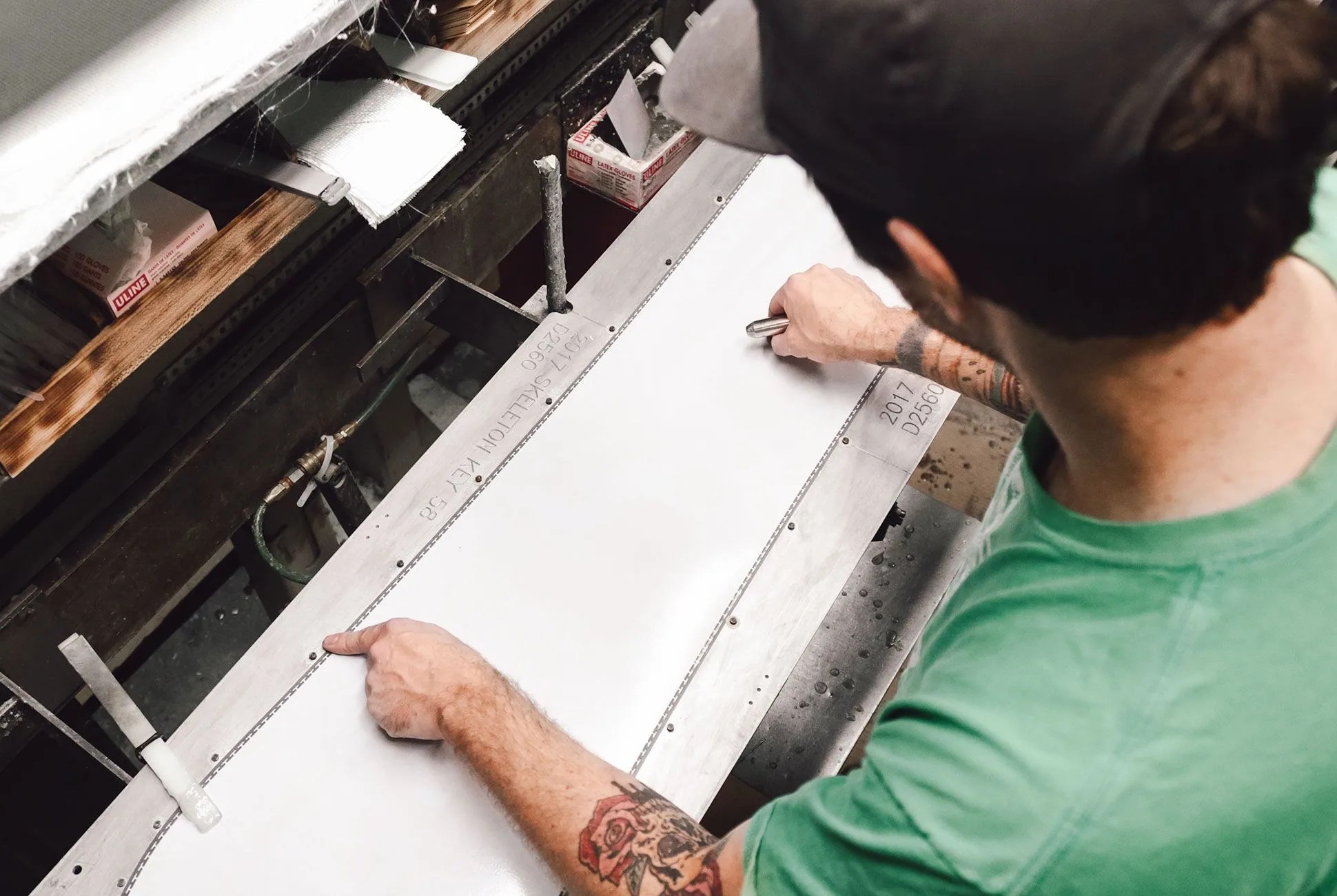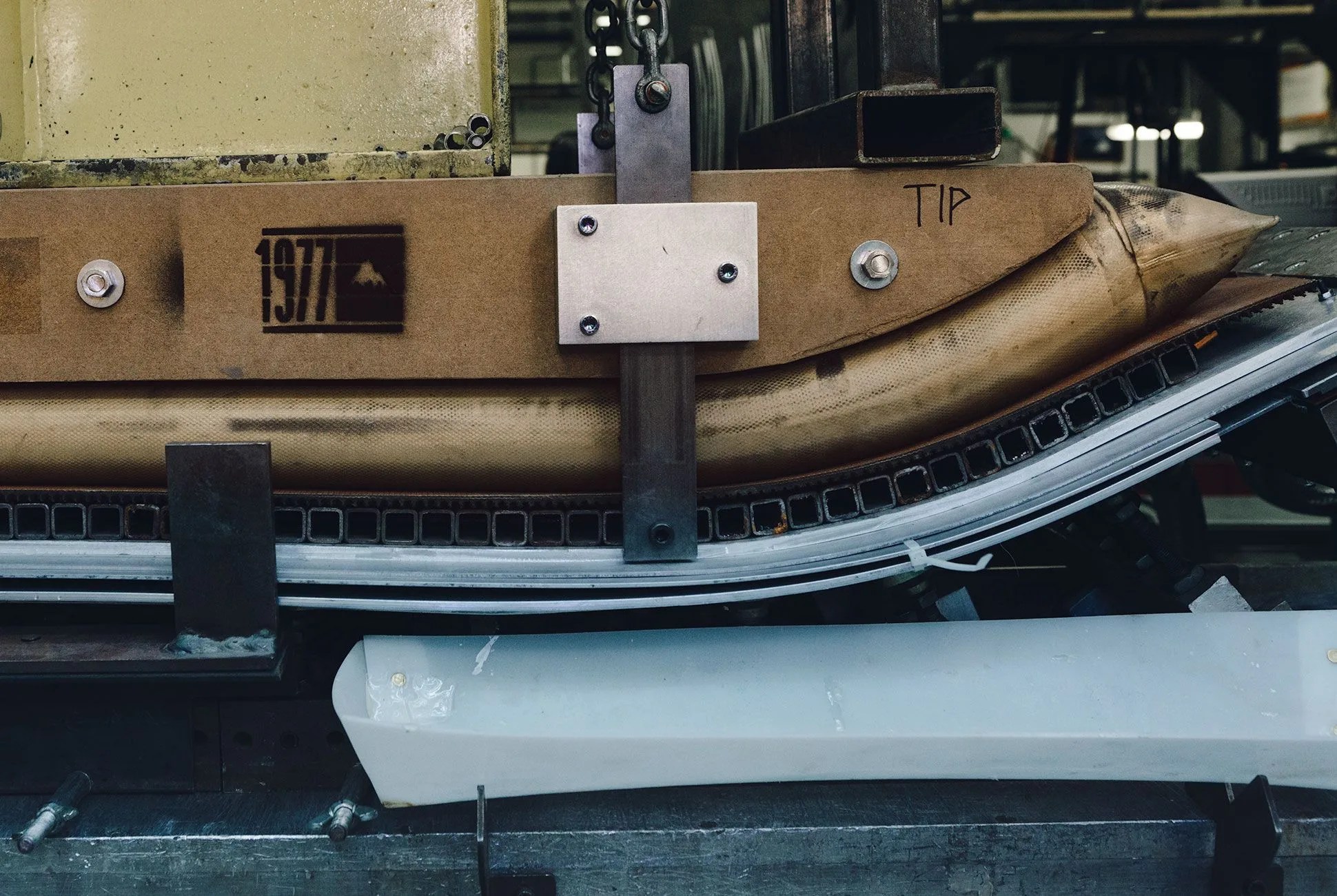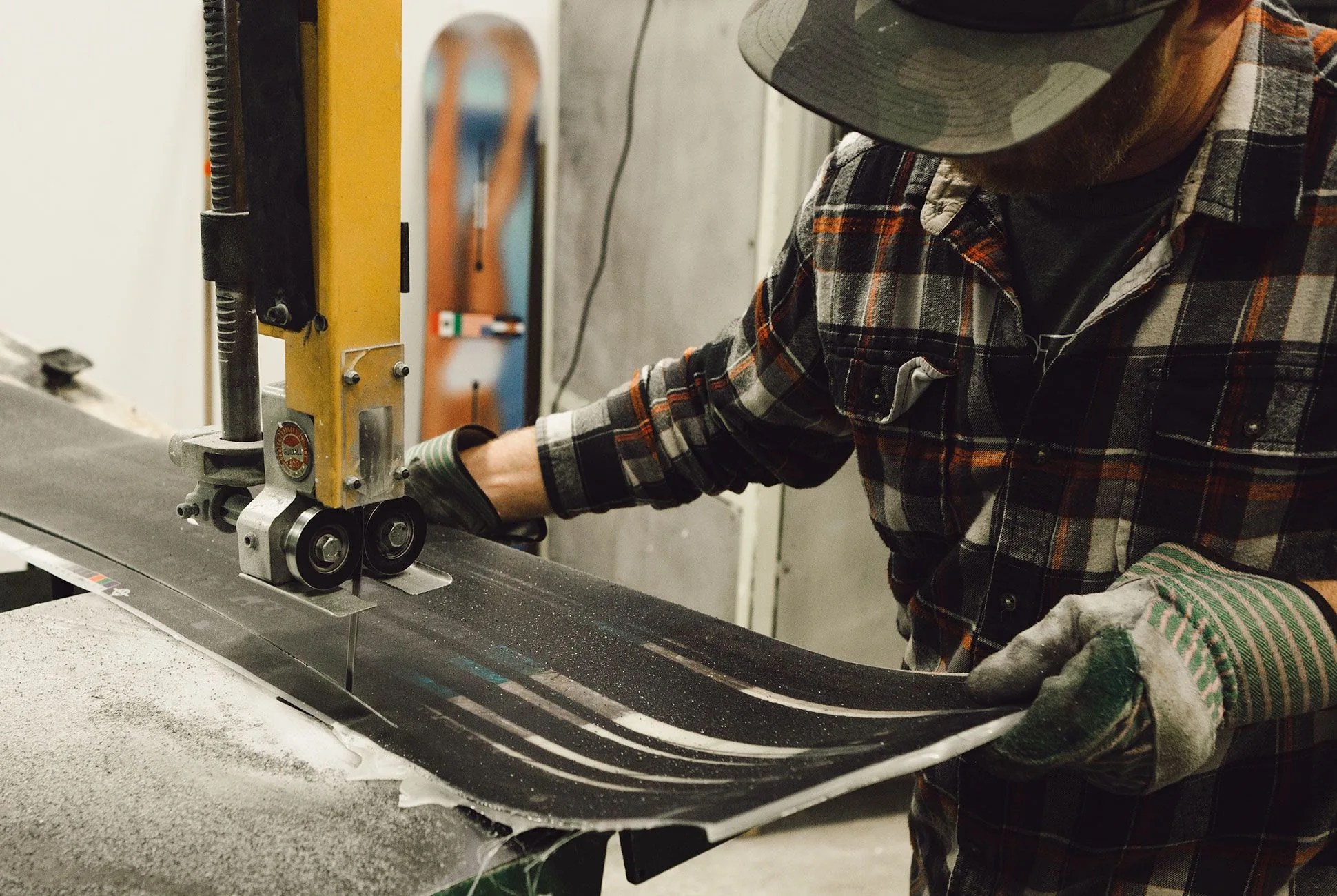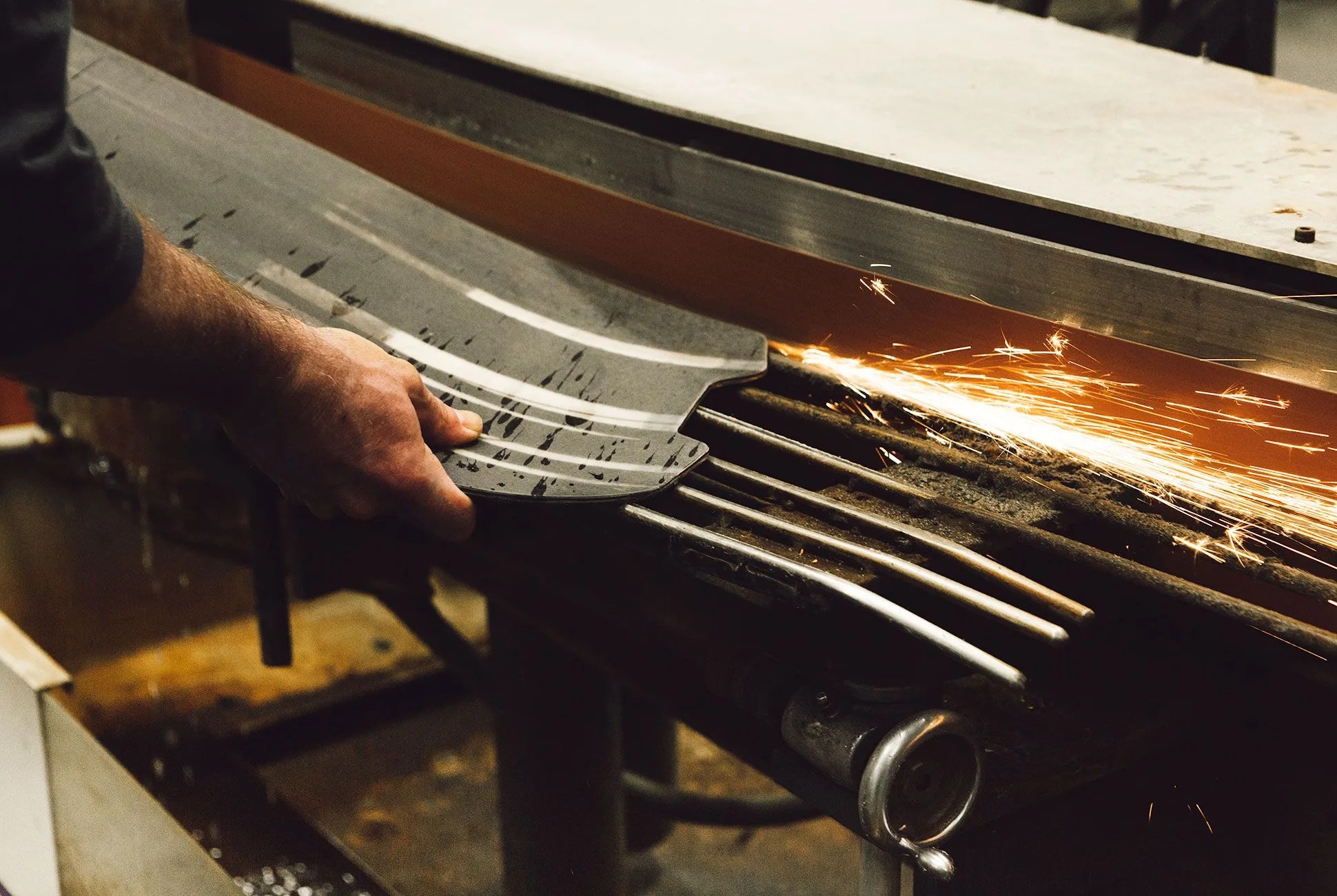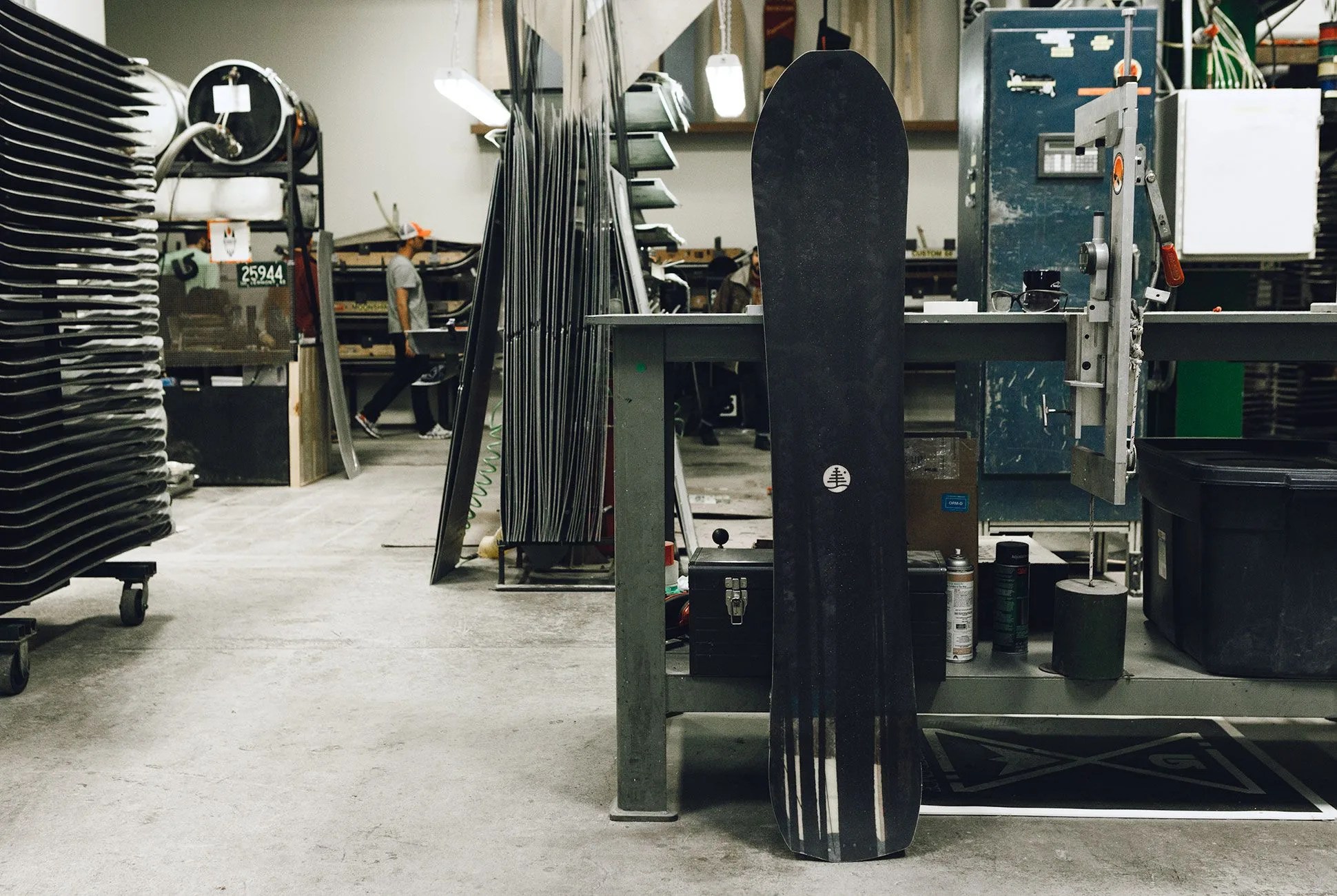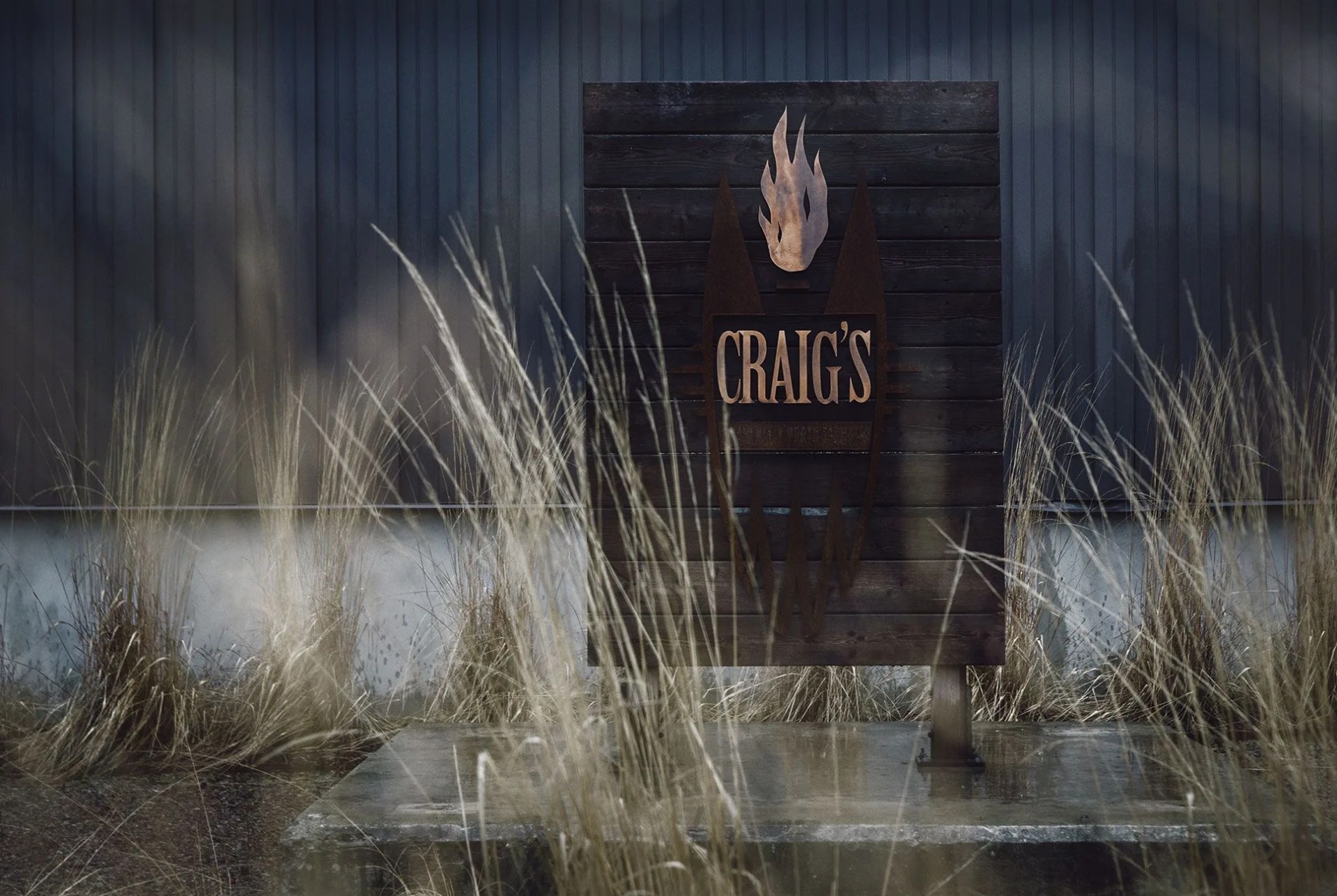8 photos
Tucked away in an industrial park of Burlington, Vermont, next to a disused set of railroad tracks and a short walk from the shores of Lake Champlain, is the most secretive snowboard making facility in the world: Craig’s, named after the famous Burton rider and snowboard legend Craig Kelly. Little gives it away in terms of curbside appeal beyond a sign with the Burton logo. But despite its unassuming exterior, Craig’s produces all of Burton’s most coveted limited-edition and prototype boards — a process that the public rarely gets to witness. One such highly coveted, limited-edition board was being made on a rainy day in March when we stopped by for a tour of the facility.
That board was the Skeleton Key, part of Burton’s Family Tree line of boards. The boards in the Family Tree line are, more or less, experimental boards that Burton employees want to make to satisfy their own snowboard desires. The Skeleton Key, like the other Family Tree boards, wasn’t made to satisfy marketing objectives or sales numbers. These boards are a means of creative expression, a way to show what can be done with progressive snowboard design, and a way to provide the public with the snowboards that Burton designs for some of its top professional riders. It’s aimed at filling a void for Burton’s professional riders; whether or not the market responds to that remains to be seen.
At Burton’s Craig’s facility, the process of creating a snowboard is less like hand shaping a surfboard in a garage and more like engineering a new fairing for an F1 car.
Notes on the Skeleton Key, From the Slopes
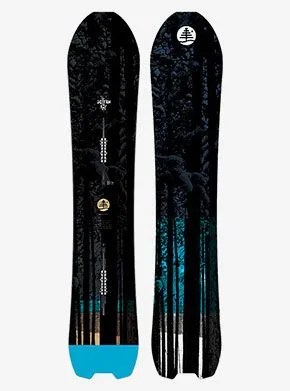
It would be easy to think that designing a snowboard is led mostly by the creative process, but data is a big factor. In the case of the Skeleton Key, the process was less like hand shaping a surfboard in a garage and more like engineering a new fairing for an F1 car. Snowboard Design Engineer Scott Seward, who worked on the Skeleton Key project, said that the board was built to accommodate the riding style of professionals like Ben Ferguson. Seward mentioned that a younger group of riders, epitomized by Ferguson, are using directional snowboards in the terrain park and are riding the entire mountain in a terrain park–oriented style. This is a marked departure from the traditional twin-shaped snowboards that most professional snowboarders ride in the park.
